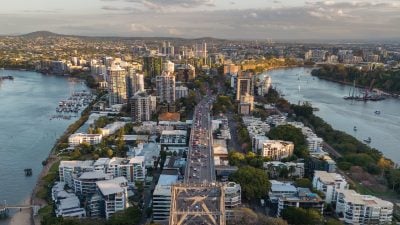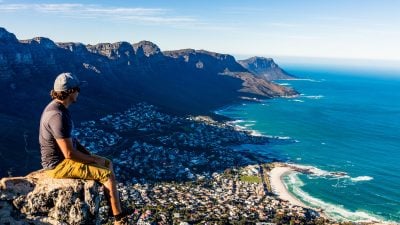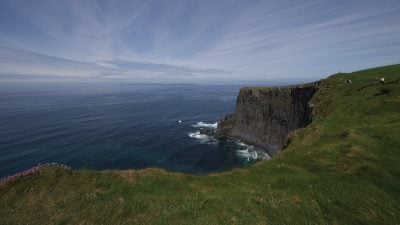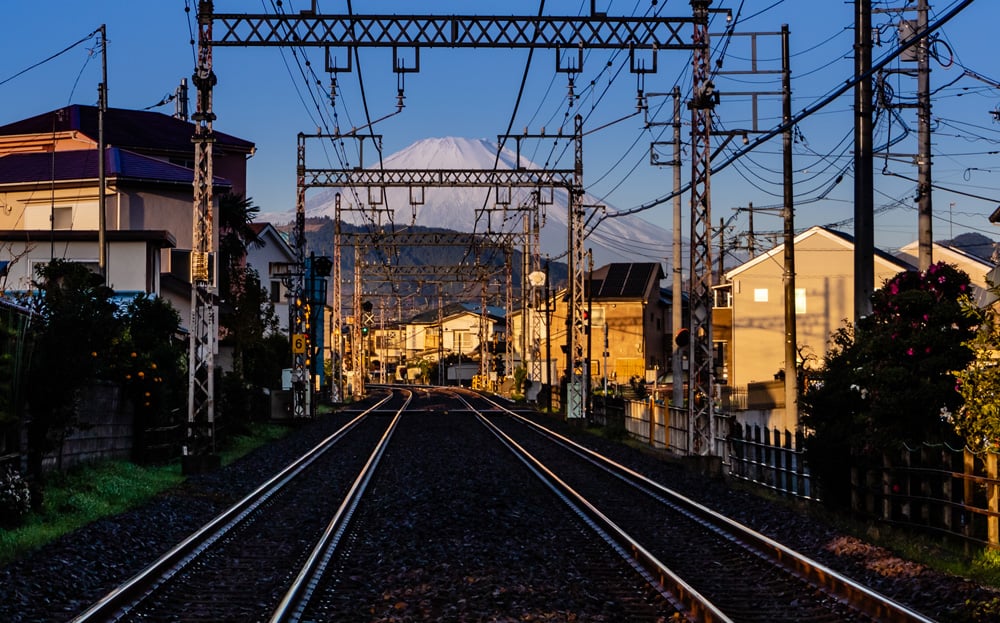
See Mount Fuji on Japan Tours with a New Direct Train from Tokyo
Mount Fuji is one of Japan’s greatest icons, but it’s not as easy to get to as you think. Or rather, it wasn’t as easy. Luckily, a new direct train service will make Mount Fuji closer to Tokyo than ever before and an essential stop on Japan tours, no matter the length of the trip.
Getting to Mount Fuji Wasn’t Always Easy
I remember when I was travelling through Japan, I planned to see Mount Fuji near the end of my trip. I had passed from Tokyo up into the Japanese Alps, down into Kyoto and Nara, and then all the way down to Hiroshima. At trip’s end, I head back to Osaka and then back up to Tokyo. I wanted to stop at Mount Fuji during the day on the way from Osaka to Tokyo and thought it’d be as simple as booking a direct train from Osaka, but no such train existed. Instead, I ended up transferring several times and riding slower, non-shinkansen trains to Gotemba, a small town to the southeast of Mount Fuji. It’s not the usual stop for people wanting to see Mount Fuji – that’d be Fujikawaguchiko – but it was easier to get to than Fujikawaguchiko, especially considering I wanted to head to Tokyo afterwards.
I ended up spending a few hours in Gotemba and admiring Mount Fuji from a distance, but the sights were not as spectacular as I was hoping. It was a hot day and the haze blocked out a lot of the view. At least it did clear up about mid-afternoon and I also got to see the Peace Temple that sits in a park on a hill facing Mount Fuji. With such a limited amount of time, it was the best I could do. If I were to go now, I’d have a much better option.
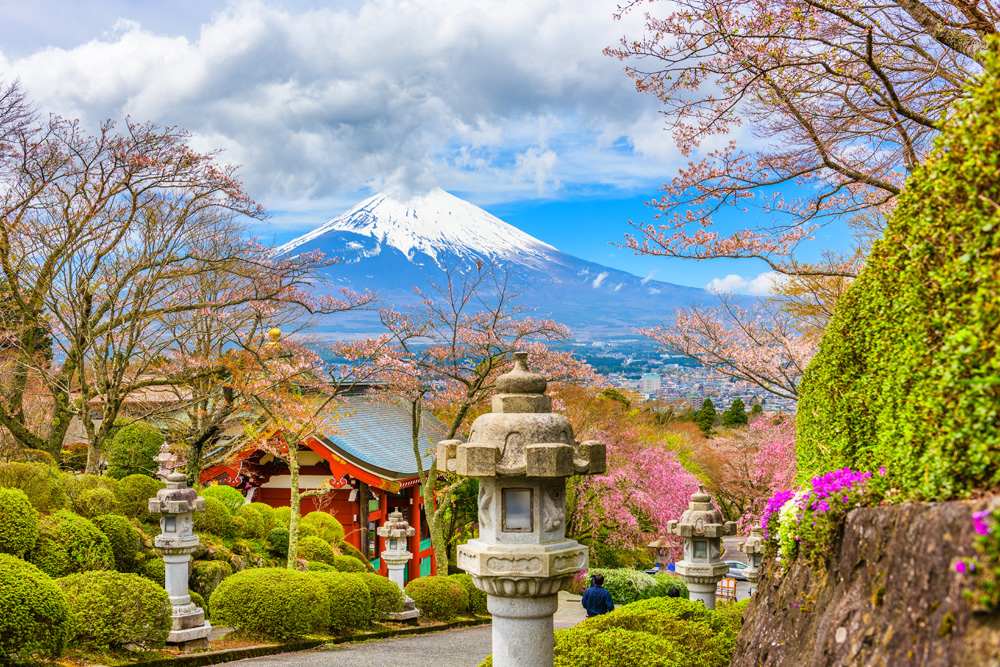
Direct Train Service from Tokyo to Mount Fuji
Starting March 19th, Japan Rail will start a new direct train service from Shinjuku Station in Tokyo to Kawaguchiko Station on the northern side of Mount Fuji. This means that you won’t have to do what I did and transfer several times to enjoy views of the famous mountain.
The Fuji Excursion train runs twice daily during the week and three times on weekends. From Shinjuku, the train leaves at 8:30am and 9:30am each morning, while on weekends it also leaves even earlier at 7:35am. The trip takes one hour and 50 minutes, and knowing how good the Japanese are at staying on schedule, this travel time is not an estimate but an exact calculation. The train service does make a few stops along the way to Kawaguchiko, such as Otsuki and Fuji-Q Highland, the popular amusement park near the mountain, but even with these stops, it’s undoubtedly the best way to get to the mountain on Japan tours.

Mount Fuji is the Nation’s White-Capped Icon
Everyone recognizes Mount Fuji, but that doesn’t mean everyone knows what makes this mountain so special. It’s the highest mountain in Japan and the seventh highest island peak in the world, so it’s large, even if it’s no Mount Everest. People have always been drawn to tall mountains, and Mount Fuji is also considered one of Japan’s Three Holy Mountains, along with Mount Tate and Mount Haku, so it has spiritual significance in addition to geographic significance.
While Mount Fuji has loomed large in Japanese history as far back as records go, once the capital moved to Edo (Tokyo), it became even more popular, as you can see it from Tokyo on a clear day. Artists became fixated with the mountain, most popularly Katsushika Hokusai, who immortalized the mountain in art with his Thirty-six Views of Mount Fuji series. The most popular painting in the series, The Great Wave off Kanagawa, has Mount Fuji in the centre-right of the frame.
Today, Mount Fuji continues to be one of the handful of icons most representative of Japan. Tourists want to see it or climb it, locals cherish its importance to their history and its sacred nature, and everyone admires its pristine beauty, with its snow-capped peak and near-perfect conical shape. If you don’t have time to plan an excursion, head to the Tokyo SkyTree on a clear day and drink in views of Mount Fuji peeking out from behind the city’s skyscrapers.
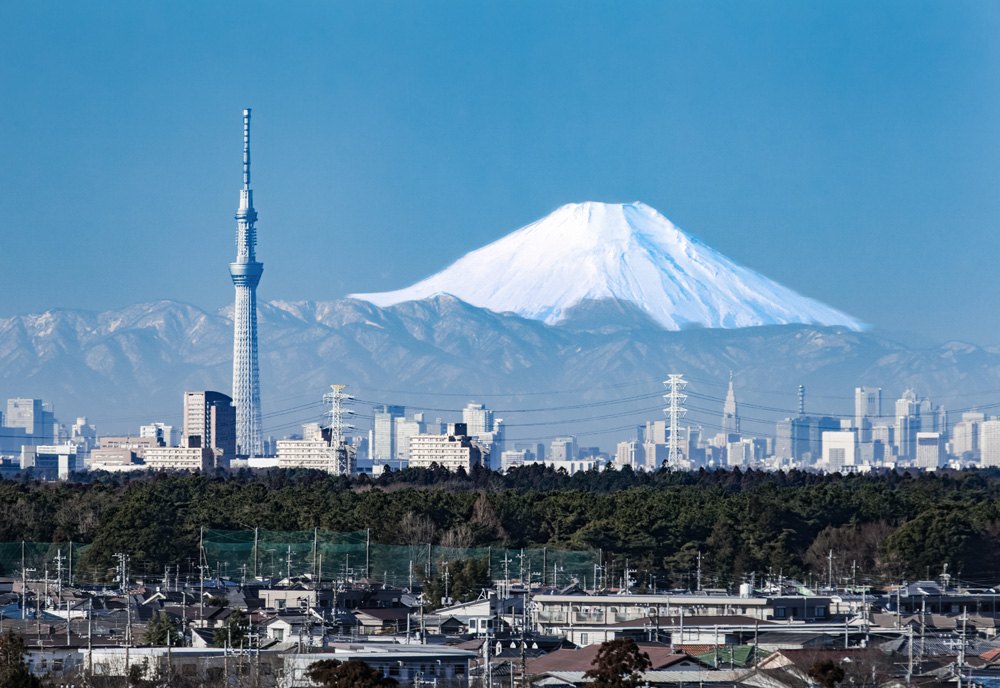
Fujikawaguchiko has the best views of Mount Fuji
The small resort town of Fujikawaguchiko is the most popular spot from which to view Mount Fuji. With the new direct train from Tokyo, it’s only bound to get more popular. The town lies on Lake Kawaguchi to the north of the mountain. If you head to the north side of the lake around Oishi Park, you can enjoy the iconic view of Mount Fuji with the clear waters of Lake Kawaguchi reflecting the mountain. Even from the main town on the south side of the lake, the mountain is easily viewable and looms over the horizon.
The town itself is full of resort hotels that feature onsens with mountain and lake views. It is a popular honeymoon destination, which means it’s expensive to stay here, but you can’t beat the views, nor the romantic ambience of the town at nighttime. If you’re only in Fujikawaguchiko for the morning, head to Oishi Park for the best views of the mountain. You should then consider visiting the Kawaguchiko Music Forest Museum or the Itchiku Kubota Art Museum if you want to see some local attractions. However, for most people, the mountain is attraction enough. Stroll along the lake’s long shoreline and enjoy the views of the mountain.

Attractions On or Around Mount Fuji
Many people choose to climb Mount Fuji during a visit, which is possible with direct buses to stations up the mountain, or if you stay overnight, in a mountain hut. The official climbing period is from July 1 to September 10, during which the mountain is free from snow and weather is most favourable for climbing. The mountain trail is divided into 10 stations, with paved roads going up to the fifth station, and buses running as far as the seventh. You can climb by yourself or with a guide, starting at one of the stations. The most popular time to climb is around sunrise, as you can enjoy some incredible views from the peak, even if the actual mountain scenery is fairly sparse (there aren’t any trees on the summit).
Even if you opt not to climb Mount Fuji on Japan tours, you’ll find other things to do around the mountain. You can wander around Fujikawaguchiko near the train station or do as I did and opt for the less-travelled spots like Gotemba, where you’ll find the Peace Temple as well as one of the region’s most popular shopping outlets. The famous suicide forest of Aokigahara may attract morbid travellers, but I recommend you avoid it and give it its respectful distance. Instead, focus on the Five Fuji Lakes, which are lovely in their own right, and even lovelier when taking the backdrop of Fuji into consideration.
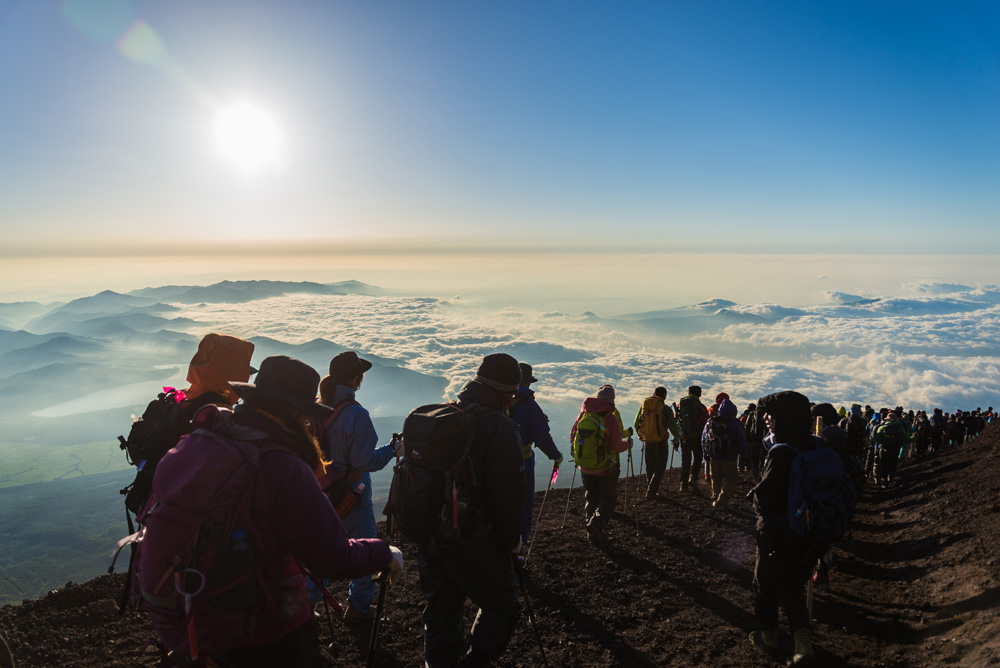
If you have a taste for kitsch, consider heading to Fuji-Q Highland, an amusement park to the southeast of the train station. Opened in 1968, Fuji-Q Highland has several roller coasters, some haunted houses, as well as smaller parks themed on Thomas the Tank Engine and anime classics like Gundam and Evangelion.
You don’t have to complicate a visit to Mount Fuji with a climb or a trip to the amusement park, but you should make the time to see this famous icon. With the new direct train from Shinjuku Station, it’s easier to visit than ever before on Japan tours.
Get more travel inspiration by email.
Subscribe
0 Comments

Get the latest travel trends & hear about the best deals on vacations around the world.
If you’re a Globetrotter, these are the newsletters for you!

